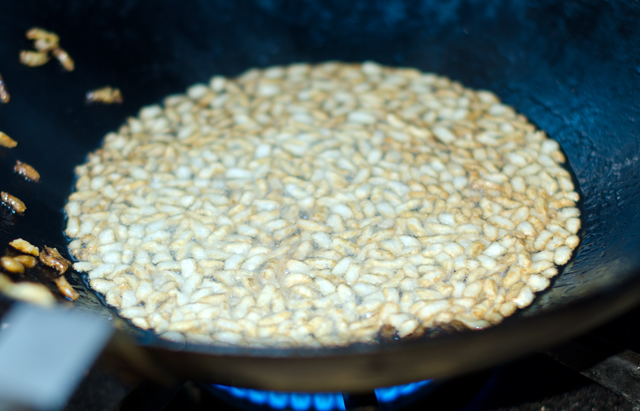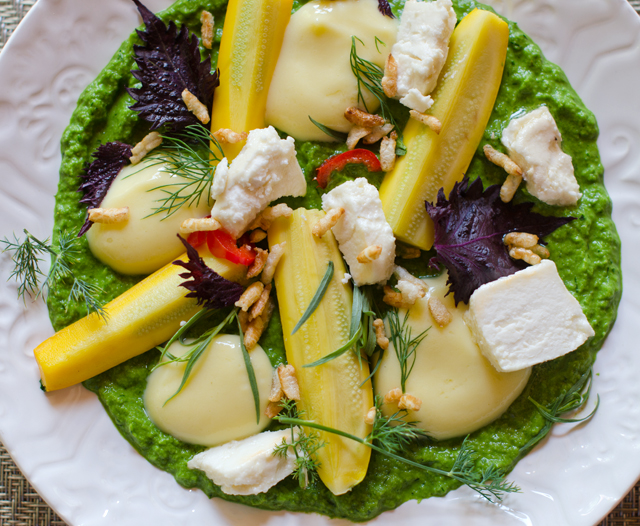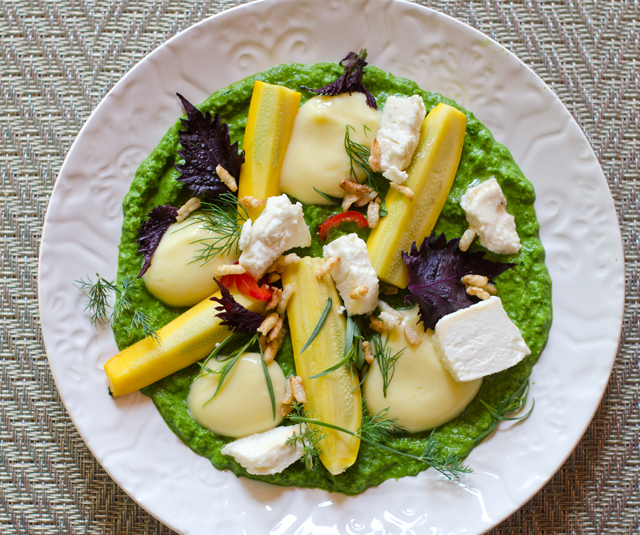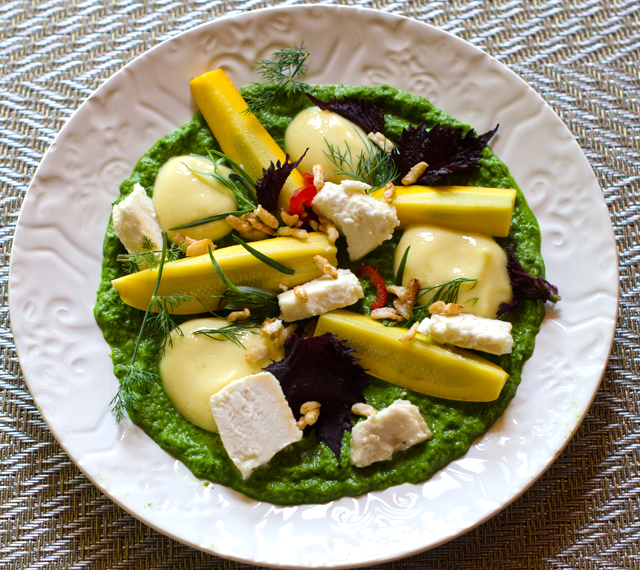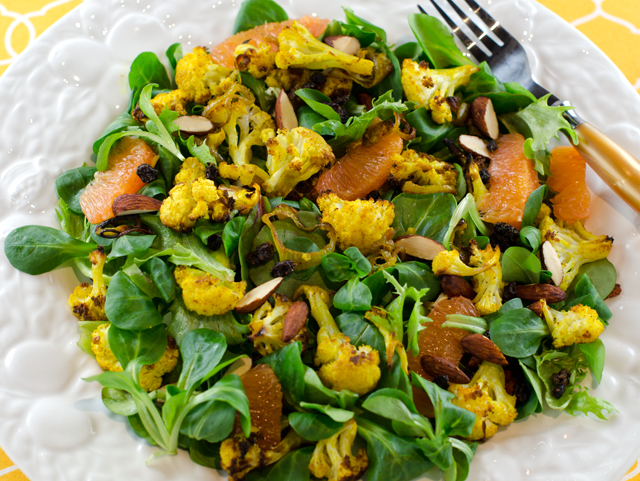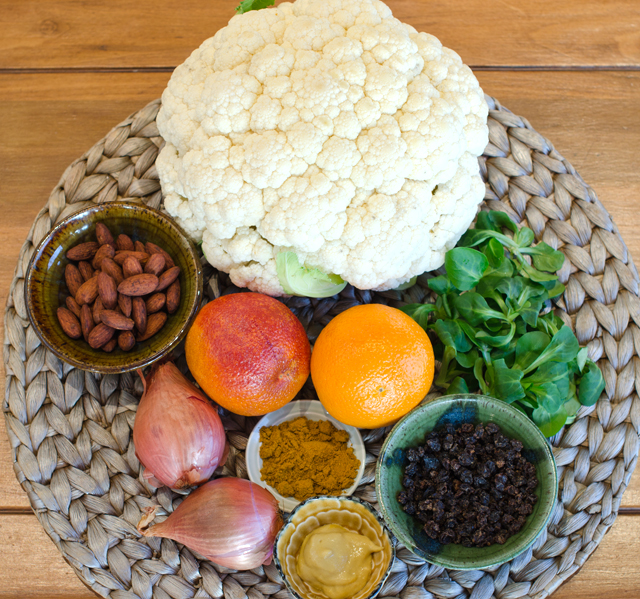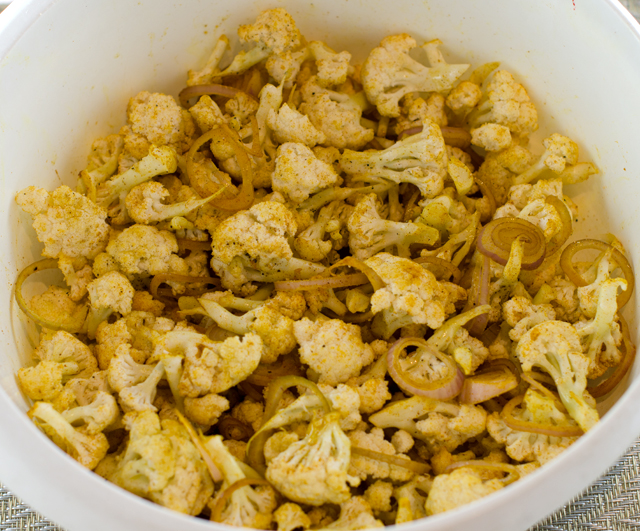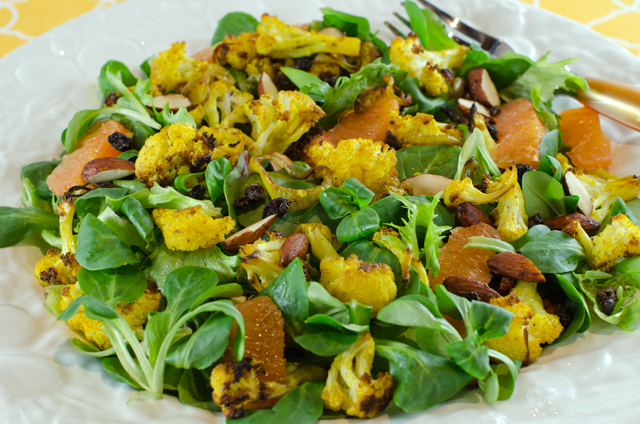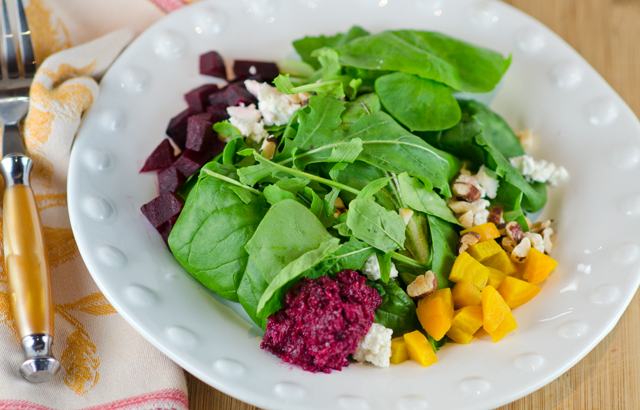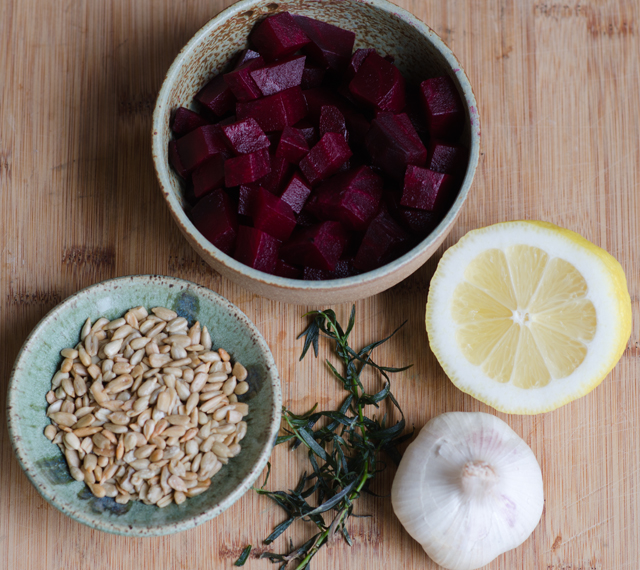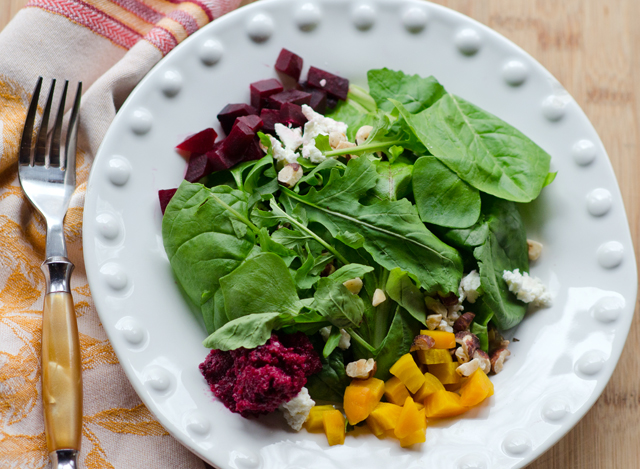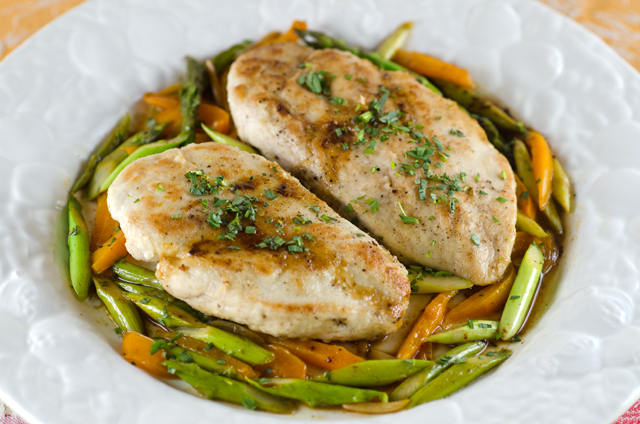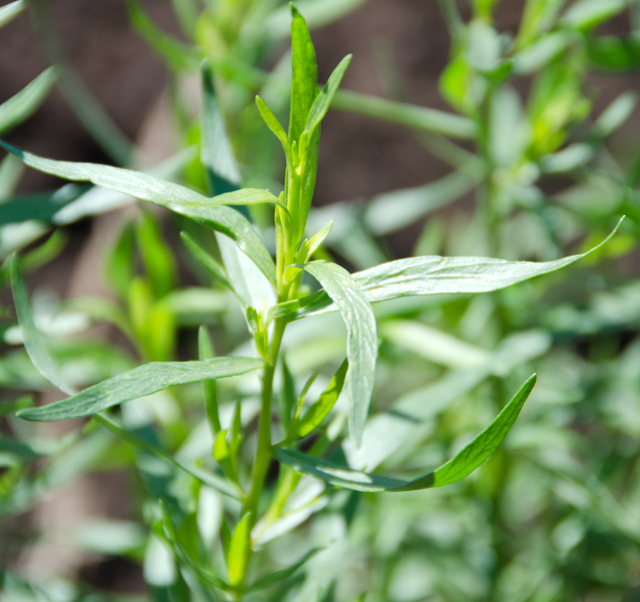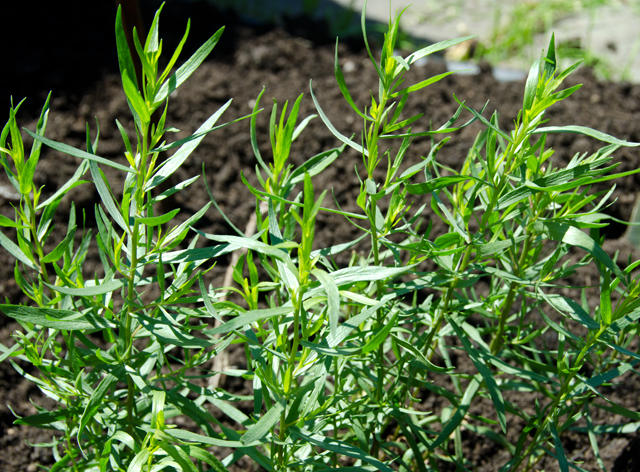My very thoughtful husband gave me two very special gifts for Christmas last year. The first, tickets for the South Beach Food and Wine festival that we attended in February, the second, tickets to the Food and Wine Classic. Held over a mid June weekend in Aspen Colorado for 35 years, the Classic is the nation’s premiere culinary event.
The Classic brings together the world’s foremost authorities on wine and food at over 80 cooking demonstrations and wine seminars. In between the classes and seminars we had time to sample gourmet bites, wines and other libations in the large white tents that made up the grand tasting pavilion. One of our favorite places to stop was to taste the creative offerings of Food and Wine magazine’s “Best New Chefs”. For the past 28 years the best new chefs have showcased the next culinary superstars. At each Grand Tasting, two of the chefs offered up their best bites to a hungry crowd. While pressing through the line to receive their offerings, I made a point to congratulate each one on this significant accomplishment. The July issue of Food and Wine magazine concurrently features an article about the best new chefs and a recipe or two from each one. Occasionally I will try some of these recipes, this year several caught my attention.
Chef Brad Kilgore serves up his “playfully brilliant” dishes at his restaurant, Alter in Miami’s Wynwood neighborhood. Chef Kilgore stated in the article that squash and zucchini are not his favorites, so his goal was to make something great from them. His recipe for Summer Squash with Lemon Curd and Citron Vinaigrette, despite having many steps looked like something I could do and make use of produce from the garden.
Since it can be made three days ahead, my first step was to make the lemon curd. Lemon and lime curd tarts were a regular on the dessert buffets in my catering business. I admit I was a little dubious about lemon curd in a savory preparation. The addition of lemongrass and ginger made this curd unique and the lemon juice was courtesy of our Meyer lemon tree. There is a lemongrass plant in the garden but it was easier to use a few stalks from my supply in the freezer. They come back to room temperature fairly quickly and they are easier to slice when cold. The curd ingredients are put in the blender and blended until smooth. Strain the curd over a fine sieve and press down on the solids to extract as much flavor as possible from the ginger and lemongrass. Put a medium saucepan of water on to simmer and put the curd in a heatproof bowl that is large enough to sit on top of but not in the pan. The bowl shouldn’t be too big but large enough that you can comfortably whisk the curd without sloshing it on the counter top
Whisk constantly for about five minutes until it thickens, the curd should coat the back of a spoon. Remove the pan from the heat and whisk in the butter 1 tablespoon at a time and finish by adding the extra virgin olive oil. Cover the surface of the curd directly with plastic wrap, this will prevent the curd from forming a skin and refrigerate until cold about three hours.
The zucchini herb puree can also be prepared before the salad is assembled. Our source for yellow squash and several varieties of zucchini is from a company called Seeds of Italy. Every summer my intention is to pick them small before they get to the size of a baseball bat but there are always a few that get away from me. Just picked little zucchini actually have a delicate nutty flavor.
The original recipe called for the squash and zucchini to be seeded which is a good idea if you are buying medium to large sized squash. Since the seed pods in the zucchini and yellow squash that I picked were not fully developed yet I didn’t feel the need to remove the seeds. I picked basil, parsley and dill from the garden for the purée. Blanch the zucchini and squash and the herbs in boiling water for only 30 seconds. Blanching brightens the color of both the squash and the herbs. Immediately transfer them to an ice bath to stop the cooking. Drain them well. Pat the zucchini and squash dry with paper towels. Squeeze all the excess moisture out of the herbs. Set The yellow squash aside and purée the zucchini and the herbs in the blender. Add olive oil and salt to taste.
The vinaigrette is very simple, the acids, lemon juice and white wine vinegar are combined with chopped tarragon and honey, canola and extra virgin olive oil. I love the anisey flavor tarragon brings to any dish.
I read the recipe again to be certain I had all the components to plate it. Dill and tarragon sprigs, check. I added some red shiso leaves too. They grow like mad in the garden and seem to be a chef favorite. Thinly sliced chilies, were also a check. The last garnish had me initially stumped, puffed rice. Did they mean like the cereal? Probably not was my guess.
I found a slightly time consuming but easy way to make it. I cooked a cup of brown basmati rice until it was done, about 40 minutes and let it cool. I preheated my convection oven to 250°F, spread the rice out in a thin layer on a baking sheet and let it dry out for about an hour. I turned the oven off and let the rice dry out overnight. Line several baking sheets with paper towels. The next step is to heat about an inch of cooking oil in a wide pan , I used my wok for this. When the oil reaches 375°F add a kernel of rice, if it puffs up they are ready to go. Add the rice in batches, when it hits the hot oil the rice puffs up in seconds. You should be prepared with a fine mesh strainer to scoop out the puffed kernels before they get too brown. Puffed rice smells great, all toasty, it’s good as a salad garnish or just for munching.
With all components ready, I was ready to assemble the salad. Spread a thin layer of the zucchini herb purée on each plate. Dollop a little of the curd on the purée. Toss the yellow squash with some of the vinaigrette and season with salt. Arrange a few pieces of squash on the plates along with the marinated cheese. Garnish with herbs, chilies and puffed rice.
Joe declared the salad delicious and over the top, a unique combination of flavors and textures. On first glance this recipe looks very “cheffy” Lots of special steps and components, usually enough to scare the average home cook away. Obviously it’s not something you would whip up after work on a week night. But the steps are manageable, the curd, puree and vinaigrette can all be done ahead. It was a wonderful salad, beautiful, very unique, a wonderful combination of flavors and textures. Hmm, guess that’s why he’s a best new chef.
I was also interested to read that Chef Kilgore makes all of the desserts at his restaurant, that’s not typical of most head chefs. The lemon curd infused with lemongrass and ginger was very good. I have some left over from the salad and will serve it with some of our fresh blueberries that should be ready to harvest this weekend. The zucchini herb puree I had leftover made a good sauce for salmon and would work for poached chicken too. I’m certain I will be making it again this summer. The puffed rice was a bit of a revelation and fun to do. It makes an interesting addition to a salad and just for munching too.
Summer Squash Salad with Lemon Curd and Citron Vinaigrette
Serves four
Ingredients for the lemon curd
- 1/3 c fresh lemon juice
- 3 large eggs
- 2½ T sugar
- 1 T thinly sliced lemongrass, tender inner bulb only
- 2 t minced peeled fresh ginger
- 4 T unsalted butter, cut into tablespoons and at room temperature
- ½ T extra virgin olive oil

Directions for the lemon curd
- In a blender, combine lemon juice, eggs, sugar, lemongrass and ginger and blend until smooth. Strain the mixture through a fine sieve into a medium heatproof bowl, pressing on the solids.
- Place the bowl over, not in, a saucepan of barely simmering water. Cook the curd, whisking constantly until the curd is thick enough to coat the back of a spoon, 5-7 minutes.
- Remove the bowl from the heat and whisk the butter in until incorporated, then whisk in the olive oil. Press a sheet of plastic wrap on the surface of the curd and refrigerate until cold.
Ingredients for the zucchini-herb purée
- 8 oz yellow squash, quartered lengthwise, seeded if necessary and cut into 3″ pieces
- 5 oz zucchini, quartered lengthwise, seeded if necessary and cut into 3″ pieces
- ½ c each, basil, parsley and dill
- 2 T extra virgin olive oil
- Kosher salt
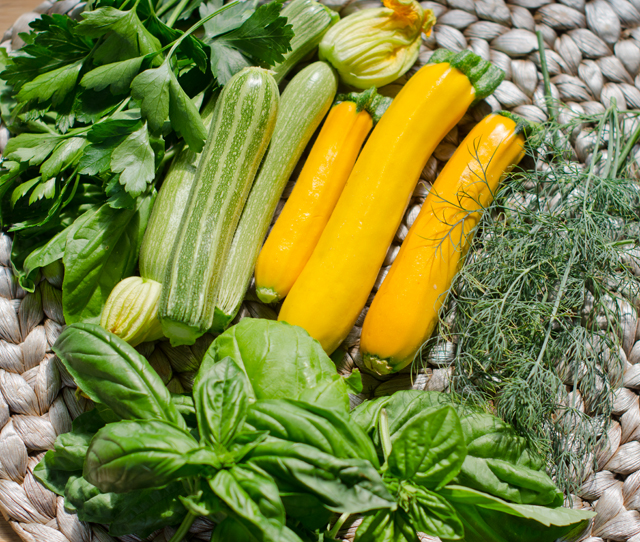
Directions for the zucchini herb purée
- In a medium saucepan of salted boiling water, blanch the squash and zucchini for 30 seconds; using a slotted spoon, transfer to an ice bath to cool completely. Blanch the herbs until wilted, about 30 seconds. Drain and transfer to an ice bath to cool. Drain the squash, zucchini and herbs; pat the squash and zucchini dry and squeeze excess water out of the herbs.
- Reserve the yellow squash in a small bowl. In a blender, purée the zucchini with the herbs and a half a cup of water until smooth. With the machine on, add the half cup of olive oil. Season to taste with salt.


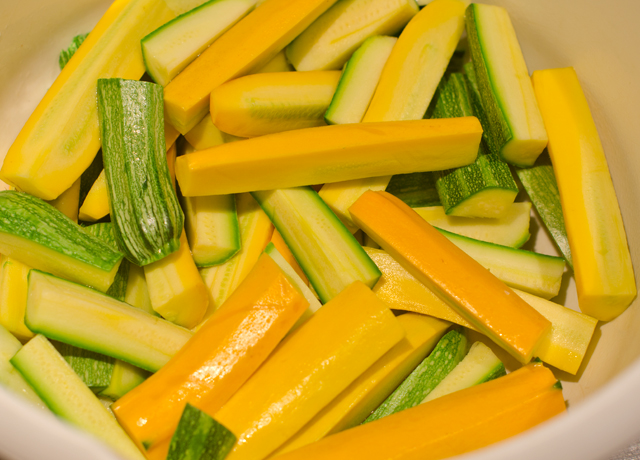
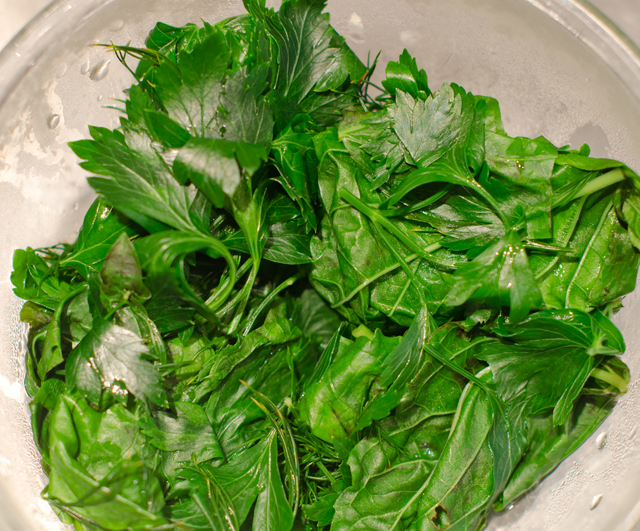
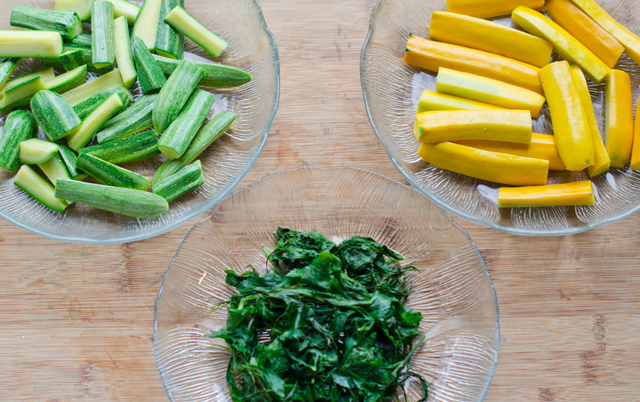
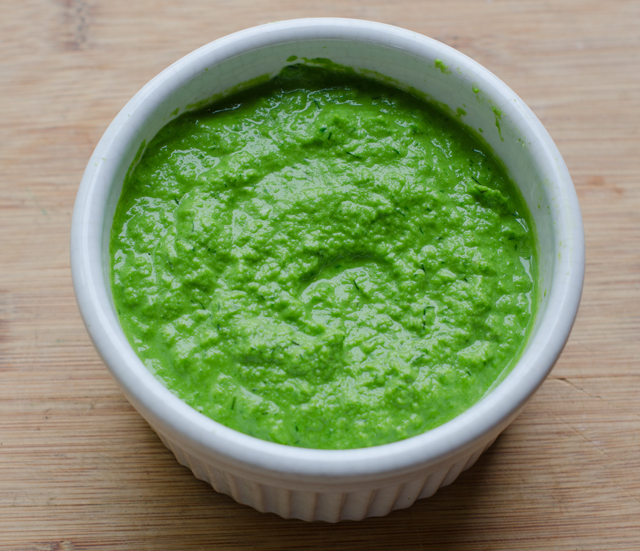
Ingredients for the vinaigrette
- 2 T fresh lemon juice
- 2 t white wine vinegar
- 1 T chopped tarragon
- ¼ t honey
- ¼ c canola or grapeseed oil
- 2 T extra-virgin olive oil
- Kosher salt
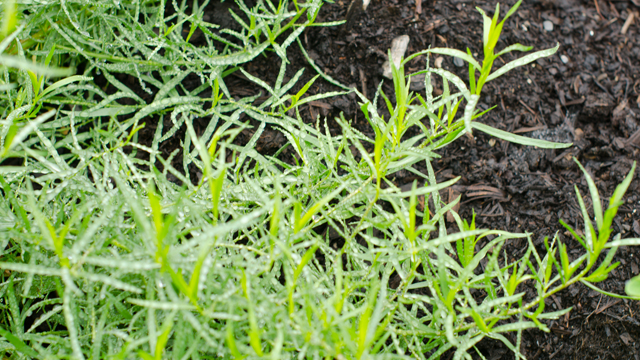

Directions for the vinaigrette
- In a small bowl combine the lemon juice, vinegar, tarragon and honey. Gradually whisk in both of the oils until emulsified. Season the vinaigrette with salt.
Final assembly of the salad
- 4 oz marinated sheep or goat’s milk cheese, cut into small chunks for serving
- Small tarragon, dill, shiso, or other herb sprigs
- Thinly sliced chilies
- Puffed rice
- Spread a thin layer of the zucchini purée on 4 small plates. Dollop a few small teaspoons of the lemon curd on the puree. Toss the squash with 2 tablespoons of the vinaigrette and season with salt. Reserve remaining vinaigrette for another use. Arrange three pieces of squash on each plate along with some of the marinated cheese. Garnish the salads with the herb sprigs, chilies and puffed rice.
